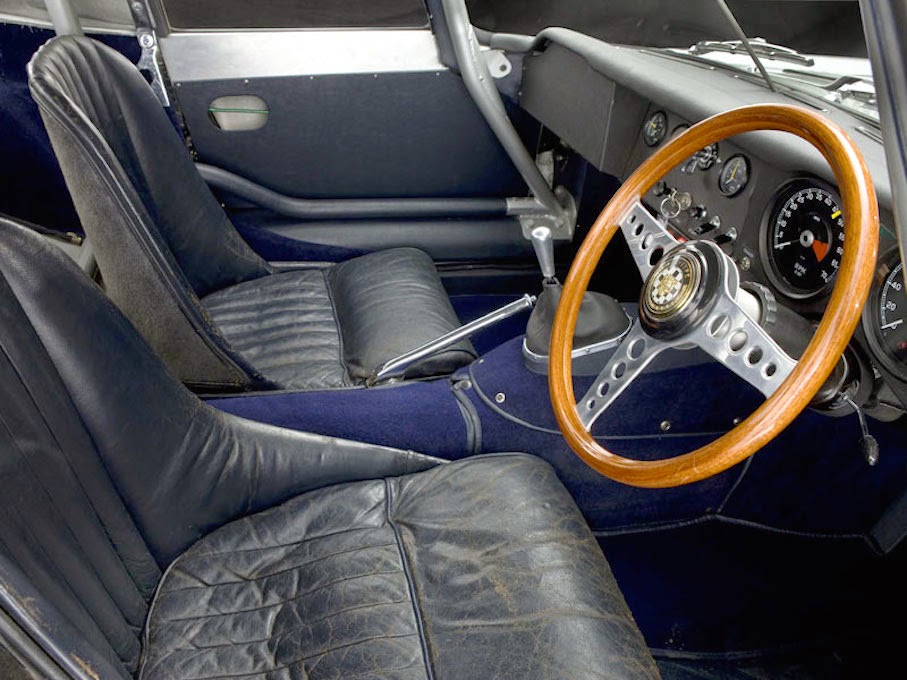Introduced in 1961 at the Geneva Motor Show, the E-Type, or XK-E as it would be known in the U.S., became an icon, one of the silhouettes that even car unenthusiasts can recognize from a distance, thanks to an aerodynamic shape penned by Malcolm Sayer. Capable of 150 mph, it was the fastest car in the world in its day.
In production trim, the E-Type was incredibly fast and nimble, but there was room for improvement. For starters, it steel body was heavy while many of its competitors were using lightweight aluminum. Homologation rules for GT competition dictated that the body could be modified but the chassis was to remain unchanged. In 1963 Jaguar produced 12 all-aluminium E-types that are now known as the Lightweights. The new body was formed in nearly identical fashion to the production road car, and fitted with a separate hard-top roof with a small vent at the rear. A few of the later cars were given a full fast-back coupe body. They were built as out-and-out racing cars to compete on the great tracks of the world, primarily against Ferrari with their recently introduced 250 GTO. Each of the 12 went to established racing teams (and drivers) of the era.
The cars used an aluminium block tuned version of the production 3.8-litre Jaguar XK inline-six engine with 300 bhp (224 kW) output rather than the 265 bhp (198 kW) produced by the "ordinary" version. Four-speed E-type gearbox, with some later cars being fitted with a ZF 5-speed gearbox.
The original run of Lightweights was meant to be 18 vehicles; however only 12 were built. In 2014, Jaguar has come good on its promise to finish off the six unused E-type chassis numbers to make half a dozen very special sports cars. The new cars will be hand-built to the exact same specification as the originals. An original Lightweight E-Type’s body will be mapped digitally to the new cars to make sure the six new bodies were an identical replica. A prototype was shown at Pebble Beach, Monterey. The six customer cars will be in addition. Jaguar quotes the cars will produce ‘well over’ 300bhp and around 280lb ft at 4500rpm. Customers can tailor the car to suit, but Connolly leather is provided in the interior to the same spec as in 1964 and you perch on a period aluminium bucket seat. Buyers can pick from a fully trimmed interior or one that’s more pared back for that authentic historic racer vibe at Goodwood or Laguna Seca. (wikipedia, carmagazine.co.uk, motorauthority.com)
Original Jaguar Lightweight E-Type (1963-64)
Only 12 were built. Formed in nearly identical fashion to the production road car, and fitted with a separate hard-top roof with a small vent at the rear. A few of the later cars were given a full fast-back coupe body. One Lightweight was modified into a Low-Drag Coupé (the Lindner/Nocker car). Another Lightweight was modified into a unique Low-Drag design (the Lumsden/Sargent car). (wikipedia)
(Photos from autowp.ru, conceptcarz.com, ultimatecarpage.com,
autoblog.com, commons.wikimedia.org, bonhams.com,
classic-auctions.com, jdclassics.co.uk & motorauthority.com)






































































































.png)
.png)
.png)
.png)

.png)
.png)
.png)
.png)
.png)
.png)
.png)
.png)
.png)
.png)
.png)
.png)
.png)
.png)
.png)
.png)








